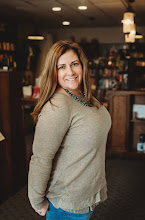I’m joining up with Ruth Ayres for her weekly link-up, Celebrate This Week. Check out all of the posts linked up at her blog HERE. Thanks for starting this, Ruth!
Today ends a week I look forward to and dread all at the same time.
I love
summer. I love freedom, sleeping in, reading all day, spending time with my
boys, and time to recharge. As much as I abhor swimming suits, I love going to
the pool. I enjoy swimming laps, reading poolside, and seeing former students.
Summer gives me time to vacation with family, travel to conferences, and read
and write with abandon.
I also love
teaching. I love my students – getting to know their personalities, watching
them get excited over a book, and helping them find small successes in reading,
writing, and life. And as much as I know we need a break – and we really do – I
dread the end of the year.
By May I always feel like we’ve formed a family – for good and for bad. We know each other well. We support each other and push each other to succeed. By this time of year we also are like a family of ten that has been trapped in a small log cabin for such a long, long winter. We’re ready to move, to grow outside of that cabin, to fly. It is time to move on, yet part of me is never ready to let go.
Friday was
a day of endings. Last reading classes. Last time to teach these big fifth
graders I’ve come to love. Last time to talk with them about books and life – at least
in the classroom. In my first class of the day, I knew I was in trouble. When I
brought us to a close at the end and told them I loved them and was honored to teach them for this year, one girl began to
sob. The chain reaction began. No matter how much I tried to say that we live
in a small town, that I’d see them at the pool this weekend, that my son is in
their class and I’d always be around, the tears flowed. A line formed and I
hugged, and hugged, and hugged. They left, and I was a mess. Class two entered
and did better. But when they left, and after another line of hugs, I found letters
they had left me. Beautiful letters. Letters that ended with sentences like, “So,
I love you (not in an awkward way.)” That might be the perfect fifth grade
sentence. My own tears returned. My class came in. I informed them there would
be no more tears. I’m still with them until Tuesday. And we celebrated.
After
school – and after a retirement party for some amazing teachers – I headed to
the pool. It was exactly what I needed. While sitting in a chair poolside for
two hours I talked to former students who are in sixth grade all the way through seniors in
high school. They eased my sadness and reminded me that I’m truly blessed to
live in a town where goodbye is not forever.
So, today I
celebrate my students. I celebrate their reading this year. I love this
activity below. We do a lot of talking about how this is not a competition, except
against yourself. I want them to become readers. Some came to me that way; many
became readers over our year. I don’t really care what their "number" is, and truly, they don’t either. I care that they know who they are – what they like, what
they don’t, and can describe that. I care that they talk to their friends about books. I care that they make plans for what they're reading next. I care that they want to read over this long summer. These faces are what make my job worth it,
and I will miss them more than I can say. Enjoy our video.


















